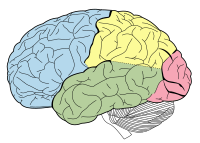
Impact of external odor on self‐grooming of lesser flat‐headed bats, Tylonycteris pachypus
Sign Up to like & getrecommendations! Published in 2019 at "Ecology and Evolution"
DOI: 10.1002/ece3.5377
Abstract: Abstract Grooming is a common behavior of some mammals. Previous studies have shown that grooming is a means by which animals clean themselves, remove ectoparasites, and lower their body temperature. It is also involved in… read more here.
Keywords: lesser flat; flat headed; headed bats; self grooming ... See more keywords

Poly(I:C)-induced maternal immune activation causes elevated self-grooming in male rat offspring: Involvement of abnormal postpartum static nursing in dam
Sign Up to like & getrecommendations! Published in 2023 at "Frontiers in Cell and Developmental Biology"
DOI: 10.3389/fcell.2023.1054381
Abstract: Introduction: Maternal immune activation (MIA) is closely related to the onset of autism-like behaviors in offspring, but the mechanism remains unclear. Maternal behaviors can influence offspring’s development and behaviors, as indicated in both human and… read more here.
Keywords: behavior; nursing; test; mia ... See more keywords

Shank2 Deletion in Parvalbumin Neurons Leads to Moderate Hyperactivity, Enhanced Self-Grooming and Suppressed Seizure Susceptibility in Mice
Sign Up to like & getrecommendations! Published in 2018 at "Frontiers in Molecular Neuroscience"
DOI: 10.3389/fnmol.2018.00209
Abstract: Shank2 is an abundant postsynaptic scaffolding protein implicated in neurodevelopmental and psychiatric disorders, including autism spectrum disorders (ASD). Deletion of Shank2 in mice has been shown to induce social deficits, repetitive behaviors, and hyperactivity, but… read more here.
Keywords: enhanced self; hyperactivity; deletion; shank2 deletion ... See more keywords

Excessive self-grooming, gene dysregulation and imbalance between the striosome and matrix compartments in the striatum of Shank3 mutant mice
Sign Up to like & getrecommendations! Published in 2022 at "Frontiers in Molecular Neuroscience"
DOI: 10.3389/fnmol.2023.1139118
Abstract: Autism is characterised by atypical social communication and stereotyped behaviours. Mutations in the gene encoding the synaptic scaffolding protein SHANK3 are detected in 1-2% of patients with autism and intellectual disability (ID), but the mechanisms… read more here.
Keywords: imbalance; excessive self; mice; self grooming ... See more keywords

Simultaneous Antagonism at H3R/D2R/D3R Reduces Autism-like Self-Grooming and Aggressive Behaviors by Mitigating MAPK Activation in Mice
Sign Up to like & getrecommendations! Published in 2022 at "International Journal of Molecular Sciences"
DOI: 10.3390/ijms24010526
Abstract: Dysregulation in brain neurotransmitters underlies several neuropsychiatric disorders, e.g., autism spectrum disorder (ASD). Also, abnormalities in the extracellular-signal-regulated kinase (ERK)/mitogen-activated protein kinase (MAPK) pathway pave the way for neuroinflammation, neurodegeneration, and altered learning phenotype in… read more here.
Keywords: aggressive behaviors; grooming aggressive; h3r; mapk pathway ... See more keywords

Camphor, Applied Epidermally to the Back, Causes Snout- and Chest-Grooming in Rats: A Response Mediated by Cutaneous TRP Channels
Sign Up to like & getrecommendations! Published in 2019 at "Pharmaceuticals"
DOI: 10.3390/ph12010024
Abstract: Thermoregulatory grooming, a behavioral defense against heat, is known to be driven by skin-temperature signals. Because at least some thermal cutaneous signals that drive heat defenses are likely to be generated by transient receptor potential… read more here.
Keywords: response; trp channels; epidermally back; trp ... See more keywords